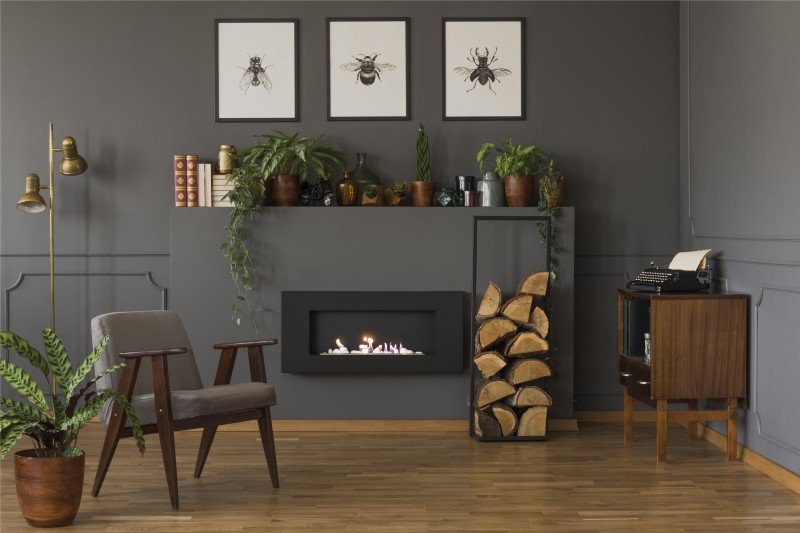The Timeless Appeal of Traditional Fireplaces in the UK
Traditional fireplaces have long been important to homes across the United Kingdom, going beyond simple utility to become centerpieces of heat, convenience, and aesthetic beauty. This article looks into the enduring appeal of traditional fireplaces, exploring their history, style variations, setup considerations, and their modern-day importance.
Historical Significance of Fireplaces
The fireplace has played a central role in British homes because middle ages times. Initially, they were necessary for heating and cooking. Over the centuries, with the introduction of main heating and technological advancements, fireplaces have actually changed into symbols of heritage and style.
Key Historical Milestones
| Date | Turning point | Description |
|---|---|---|
| 12th Century | Introduction of Chimneys | Permitted indoor fireplaces to be common, better ventilation. |
| 16th Century | The Renaissance impact | Fireplaces ended up being more ornamental, showing the era's designs. |
| 18th Century | The Georgian Era | Established intricate mantels made from wood and stone. |
| 19th Century | Victorian Era | Intro of cast-iron and tiled fireplaces. |
| 20th Century | Decrease and Modern Design | Shift towards gas and electric, with some revival of traditional styles. |
Types of Traditional Fireplaces
While contemporary designs focus on minimalism, traditional fireplaces typically exhibit elaborate craftsmanship and historic significance. Here are some popular kinds of traditional fireplaces frequently discovered in the UK:
Open Hearth Fireplaces
- Defined by a large opening and usually constructed from brick or stone.
- Supplies a cozy atmosphere and the sound of crackling flames.
- Needs a proper flue to reroute smoke outdoors.
Wood-Burning Stoves
- Enclosed systems that burn wood for heat, often featuring a glass door.
- More effective than open hearths, providing much better heat retention.
- Available in various styles, from rustic to contemporary.
Cast Iron Fireplaces
- Popular in the Victorian age, understood for elaborate styles.
- Resilient and distinguished for outstanding heat conduction.
- Typically function complex patterns or themes, boosting visual appeal.
Tiled Fireplaces
- Typically embellished with decorative tiles, these fireplaces showcase artistic flair.
- Common in the 19th century, tiles can include scenes or flower designs.
- Typically matched with wood or cast iron parts.
Marble Fireplaces
- Renowned for their elegance, these fireplaces are typically customized.
- Marble provides an elegant surface and matches various interior styles.
- They require mindful installation due to their weight.
Table: Comparison of Traditional Fireplace Types
| Fireplace Type | Heat Efficiency | Visual Appeal | Maintenance Needs | Fuel Type |
|---|---|---|---|---|
| Open Hearth | Low | High | High (chimney cleansing) | Wood |
| Wood-Burning Stove | High | Moderate | Moderate (wood supply) | Wood |
| Cast Iron | High | High | Low | Wood/Gas |
| Tiled | Moderate | Really High | Low (if non-usable) | N/A |
| Marble | Moderate | Very High | Moderate | N/A |
Considerations for Installing a Traditional Fireplace
Setting up a traditional fireplace can improve a home's character however features specific factors to consider. Here are some points homeowners ought to remember:
- Building Regulations: Always inspect local building regulations and policies. Installation may require permission, especially if structural adjustments are needed.
- Product Selection: Choose materials that match the home's architecture and personal style. Consider practicality alongside visual appeal.
- Ventilation: Ensure appropriate ventilation through a chimney or flue to avoid smoke and gases from building up inside your home.
- Safety Precautions: Install carbon monoxide gas detectors and make sure all safety measures are in place, especially if utilizing wood-burning options.
- Professional Installation: Engage a certified professional to ensure safe and reliable setup, abiding by security standards.
Benefits of Traditional Fireplaces
In spite of the rise of modern heating services, traditional fireplaces stay beloved for a number of reasons:
Aesthetic Charm
- Includes character to any space.
- Functions as a social centerpiece, boosting events.
Mental Comfort
- Offers warmth not simply physically but mentally.
- Produces a cozy environment perfect for relaxation.
Value Addition to Property
- Boosts the appeal of a home to potential buyers.
- Often increases property value due to their desirability.
Environmental Considerations
- Wood can be an eco-friendly resource when sourced sustainably.
- Traditional fireplaces can contribute less to energy costs compared to electric systems.
Often Asked Questions (FAQs)
1. Are traditional fireplaces energy effective?
While traditional fireplaces might not be as energy-efficient as modern heating systems, improvements in design, such as the setup of glass doors, can boost their effectiveness. Wood-burning stoves are particularly known for being more effective than open hearths.
2. How often should traditional fireplaces be cleaned up?
Chimneys should be checked and cleaned up at least when each year, specifically if the fireplace is used frequently. This avoids creosote accumulation, which can result in chimney fires.
3. Can I use a traditional fireplace for gas heating?
Yes, traditional fireplaces can frequently be converted to use gas. This involves installing a gas line and might need a conversion kit depending upon the fireplace model.
4. What are the best fuels for wood-burning fireplaces?
Seasoned woods such as oak, hickory, or maple are suggested for wood-burning fireplaces as they burn hotter and longer than softwoods.
5. Can traditional fireplaces be utilized in modern homes?
Absolutely! Numerous modern styles integrate traditional aspects, permitting a harmonious mix of styles. Additionally, traditional fireplaces can add a special touch to contemporary homes.
From their historical significance to their modern-day relevance, traditional fireplaces remain an essential function in many UK homes. Their long-lasting popularity is not only rooted in their functionality but likewise in the warmth and beauty they use. Whether Fireplaces And Stoves go with a classic open hearth or a wonderfully tiled fireplace, the choice contributes to producing a welcoming environment where memories can be made. As homeowners become more conscious of visual appeals and fond memories, traditional fireplaces are poised to keep their attraction for generations to come.

